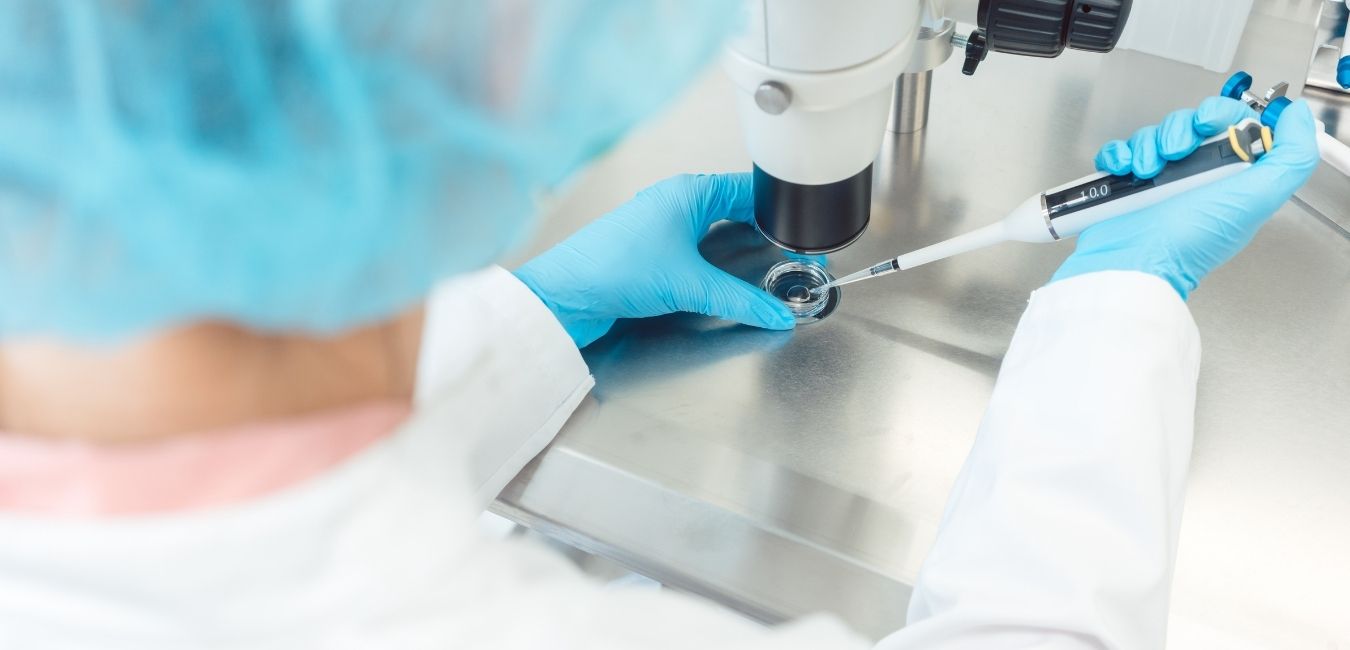Most people consider having children at some point in their lives. For many, starting a family can be an important goal for their fulfilment and happiness. In the case of transgender persons who wish to opt for biological offspring, it is advisable that this question be considered before undertaking any type of body modification process, whether hormonal and/or surgical. It is therefore important to have access to good counselling with regard to reproduction and transgender fertility.
Hormone therapy and transgender fertility

It is clear that the process of hormone therapy for transgender people can affect fertility in the long term. It is true that pregnancies have been reported in transgender men who had already undergone hormone therapy or even during the course of such therapy. Perhaps one of the best-known cases in Spain is that of Rubén Castro, who defines himself as a non-binary transmasculine person, and who achieved his much longed-for gestational paternity in 2021 at the age of 27.
However, while transgender fertility is technically possible for a trans person who retains their uterus and ovaries and takes testosterone to ovulate and become pregnant, it would not be the most desirable way to achieve a successful pregnancy.
When you want to become a parent and become pregnant, the process should include stopping taking testosterone, with all the physical changes that this entails. In this way, if the person has ovaries and a uterus, menstruation can occur and pregnancy can be attempted.
The situation concerning trans women
If the person is a trans woman, her sperm could also be used to achieve a pregnancy, but she would still have to abandon hormone treatment, and even then, success is far from assured.
In the case of trans women who wish to have biological offspring, they should be aware that the use of anti-androgens and oestrogen therapy has a negative effect on both the function and the morphology of the testicles. This affects sperm count, sperm maturation and sperm motility. While the effects may seem reversible, this is not always the case.

It is important to bear in mind that this whole process of transgender fertility and the physical changes it entails can affect the transgender person or donor psychologically, so they will need strong support from their entourage.
Surgery and transgender fertility
When the transition process includes genital surgery, this may include gonad removal. This is the removal of the uterus and ovaries (bilateral oophorectomy/bilateral anexohysterectomy) in trans men and the removal of the testicles (bilateral orchidectomy) in trans women. All these operations are considered to be irreversible methods of sterilisation. In other words, once the surgery has been performed, the person will not be able to reproduce with their own gametes (eggs or sperm).
Fertility preservation options for transgender people
It is therefore very important that, prior to hormone therapy (and even more so prior to the various surgical procedures involving the removal of gonads), transgender people should be counselled about their options for preserving their fertility.
Basically, there are three basic options for transgender fertility, which are as follows:
1. Gamete preservation:
Gamete cryopreservation is a process by which eggs and/or sperm are obtained and frozen for possible future use once a person has decided to seek to become pregnant. Obviously, gestation can only be achieved through in vitro fertilisation techniques.
For trans men, the process of oocyte cryopreservation is more complex, as it requires ovarian stimulation with medication, egg aspiration and subsequent cryopreservation to be used at the time the person wishes to seek pregnancy. It should be noted that egg aspiration is a process performed through the vagina and requires sedation.
In the case of trans women, the process is simpler, involving ejaculation in order to cryopreserve the gametes.

2. Embryo preservation:
One step further is embryo vitrification. In this option, eggs and sperm are required. Once the eggs are obtained, the mature eggs are fertilised with a sample of semen (either from the couple concerned or from a donor) in a laboratory, where the embryos will develop (over a period of 5 or 6 days). They will then be implanted into a uterus using in vitro fertilisation techniques.
3. Preservation of ovarian or testicular tissue:
In this option, the trans person who wishes to be a parent undergoes surgery to remove a small portion of the ovary or testicle. This tissue is cryopreserved until such time as pregnancy is sought, when it can be re-implanted using fertilisation techniques to seek gestation (with or without ovarian stimulation) or to try to obtain mature oocytes in laboratory conditions.
In transgender fertility it is important to remember that, since 2016, the WHO recognises the right to medical care for all those persons who wish to reproduce and who, without medical or technological intervention, would not be able to do so. This also covers all transgender people (and indeed all LGTBIQ+ people) who wish to procreate.
If you have more questions about what transgender fertility, make an appointment with the IM GENDER team and we will inform you.



